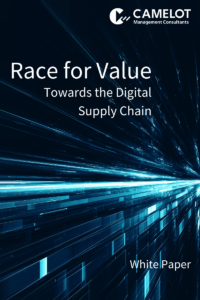Within the digital age of information and the high number of technological opportunities it is surprising, how many companies are performing production planning in the same way as in the past century (to express it in exaggerated terms). While the management is discussing initiatives to introduce artifical intelligence (AI), blockchain or any other innovative technology within the organization, production planning is very often still performed in excel sheets, on whiteboards or even on manual papers. Consequently, it is much easier to get information on what your colleague had for lunch than to get the status of his production plan for the product you urgently need.
Rather re-active within firefighting modus
Taking the technological aspect aside, the general understanding of production planning and how it is performed does not make the situation any better. Instead of a proactive, forward looking and anticipatory manner, production planning is performed rather re-active within firefighting modus. We are not saying that planners are doing a poor job. On the contrary, if you have ever been to a planners’ office and have noticed the short-term issues and challenges he or she manages from line break downs or unavailability of materials to incorporating rush orders, it is surprising that the planner still manages to get most of the products on time on the road.
Unrealistic targets are defined
Though, we think that too less emphasis is put on improving this area. Management is often too far away from production planning. If any, they are involved in Sales & Operations meeting or at least informed about the results, in which issues at production are continuously a topic. Instead of addressing the issues at the root cause, unrealistic targets are defined and requested without sponsoring any major improvement initiatives.
Software can only support a process
Hereby, we are not referring to any fancy IT tool introduction, which generates a perfect optimized plan & schedule by pressing one button. Instead we rather believe that there is major improvement potential already within the planning process. Many companies have heavily restructured and expanded which makes previous alignment methods obsolete such as shouting over the desk to get the latest planning status. Loose process ends first need to be reconnected and reintegrated into an end-to-end planning structure before any IT transformation should be started. As we all should know a software can only support a process, not replace it.
Investing in production planning does not sound fancy
Maybe investing nowadays in production planning does not sound as fancy as investing in predictive analytics or data mining, however, on which data do you want to predict, if the most relevant one is lying on the desk of your employees? At least you do not need to worry about hypertrust platforms or any data security topics. We are sure not even the best hacker can reach out for data not yet being digitalized.
Hidden potentials in production planning: Part I Contradictions
Hidden potentials in production planning: Part II Rough-cut planning

